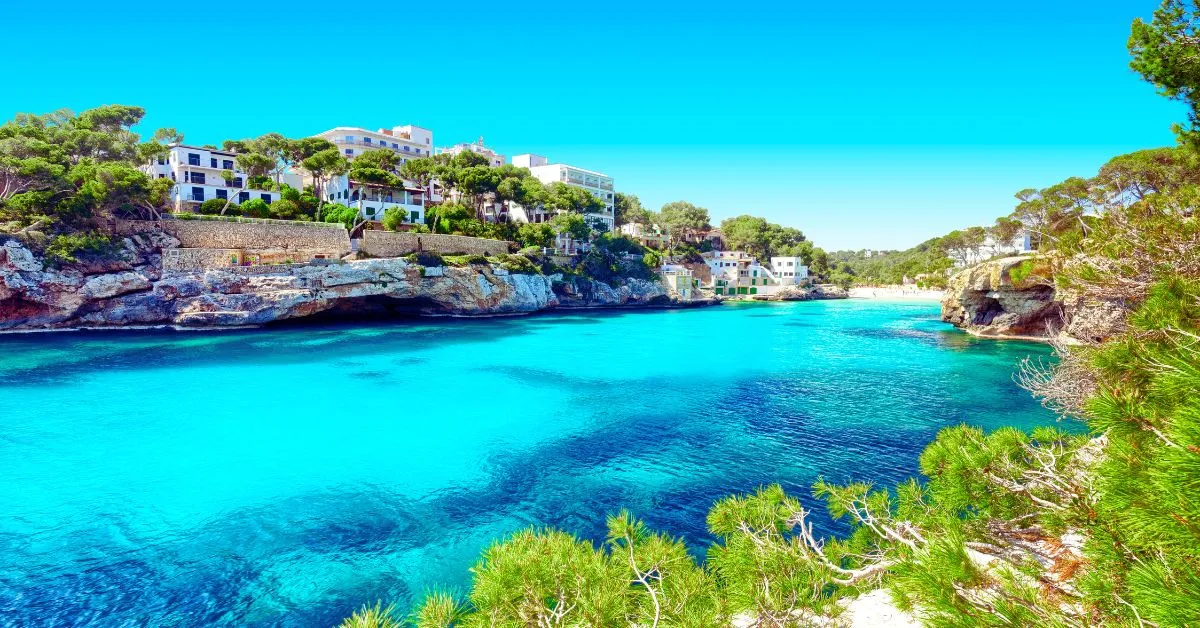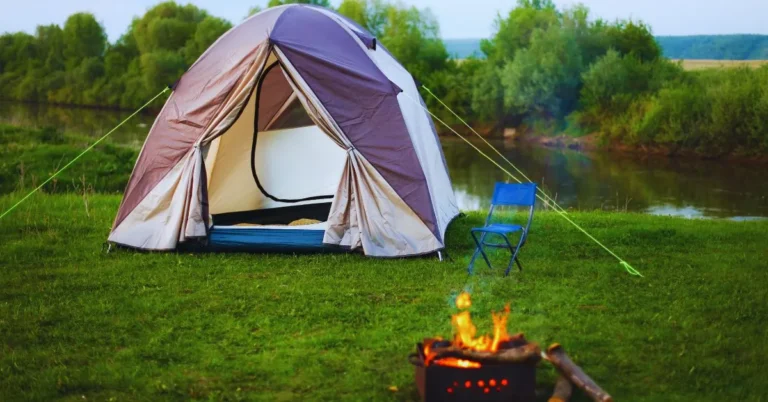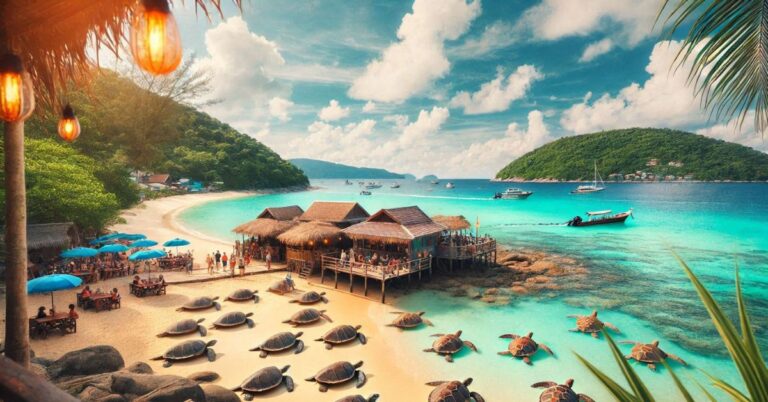Mallorca’s Regenerative Tourism: Pioneering a Sustainable Future
Mallorca, a Mediterranean gem, has captivated visitors for decades with its picturesque landscapes, vibrant culture, and sun-drenched beaches. However, the island’s allure has come at a cost. Mass tourism has placed immense pressure on its ecosystems, strained local resources, and disrupted traditional ways of life. Recognizing the urgent need for change, Mallorca is shifting towards a groundbreaking model of regenerative tourism.
Unlike sustainable tourism, which focuses on reducing harm, regenerative tourism aims to rejuvenate the environment, uplift communities, and create lasting positive change. Mallorca is embracing this transformative approach, redefining what it means to travel responsibly. From restoring natural habitats to empowering local communities, the island is becoming a global leader in shaping a new era of travel.
What Is Regenerative Tourism?
A Deeper Look
Regenerative tourism goes beyond minimizing negative impacts. Its core mission is to restore, enhance, and give back to tourist destinations. This model addresses critical issues like environmental degradation, cultural erosion, and economic inequality by actively creating solutions that benefit the planet and its people.
The Distinction from Sustainable Tourism
While sustainable tourism aims to maintain the status quo, regenerative tourism works to improve it. For instance, regenerative tourism invests in projects that rebuild ecosystems and increase biodiversity rather than just protecting endangered habitats.
This shift is particularly significant in Mallorca. The island has moved from being a hotspot for unchecked tourism to a pioneer in redefining responsible travel.
Why Regenerative Tourism Is Crucial for Mallorca
Combating the Effects of Mass Tourism
Mallorca has been a beacon for mass tourism, hosting over 13 million visitors annually. This influx has stressed local infrastructure, depleted natural resources, and led to overcrowding in iconic spots like the Serra de Tramuntana. Beaches, forests, and even villages have faced the brunt of overtourism.
Regenerative tourism addresses these challenges by limiting mass tourism’s footprint. Efforts focus on encouraging quality over quantity—welcoming fewer tourists but offering richer, more immersive experiences.
Safeguarding Against Climate Change
Mallorca faces the dual threats of rising sea levels and extreme weather as a Mediterranean island. These risks endanger its beaches, agricultural lands, and biodiversity. Through regenerative tourism, initiatives like renewable energy projects, reforestation efforts, and water conservation practices are helping the island mitigate these challenges.
Preserving Cultural Identity
Mallorca boasts a rich cultural tapestry, from its traditional cuisine to historic architecture. However, the rise of standardized tourism threatens this unique identity. Regenerative tourism prioritizes cultural preservation, ensuring that Mallorcan traditions, languages, and festivals continue to thrive.
Key Principles of Regenerative Tourism in Mallorca
Restoring the Environment
Mallorca’s regenerative tourism efforts focus heavily on environmental restoration:
- Marine Conservation: The Mediterranean Sea surrounding Mallorca is a haven for marine life. Projects are underway to protect endangered species, restore coral reefs, and combat plastic pollution.
- Agroforestry Practices: By blending agriculture with forestry, Mallorca is reviving degraded lands and promoting biodiversity. These practices also reduce carbon emissions and improve soil quality.
- Eco-Trails and Green Spaces: Trails like the Ruta de Pedra en Sec are maintained not only for tourists but also to preserve the island’s natural beauty and offer refuge for local wildlife.
Engaging Local Communities
Communities lie at the heart of regenerative tourism. Mallorca ensures that tourism benefits everyone by involving residents in planning and decision-making. Key initiatives include:
- Supporting Local Entrepreneurs: From family-run eateries to artisan workshops, regenerative tourism champions businesses that showcase Mallorcan traditions.
- Investing in Education: Locals are trained in eco-friendly farming, sustainable hospitality, and renewable energy, equipping them with skills to thrive in a green economy.
- Project Anida: This initiative strengthens ties between tourism and local industries, ensuring that profits are reinvested into the community.
Promoting Cultural Preservation
Tourism often leads to the commodification of culture. Regenerative tourism in Mallorca flips this narrative by:
- Restoring historic sites like the Castell de Bellver.
- Hosting cultural workshops where tourists can learn Mallorcan crafts, cooking, or language.
- Supporting festivals like Sant Joan and Es Firó, which celebrate the island’s rich heritage.
Advancing the Circular Economy
A circular economy reduces waste and promotes sustainability. In Mallorca, this approach includes:
- Hotels use renewable energy and reduce single-use plastics.
- Restaurants are sourcing ingredients locally to cut down on transportation emissions.
- Recycling programs that minimize waste and maximize resource use.
Flagship Regenerative Tourism Projects in Mallorca
Sustainable Destinations Summit
This event gathers experts to discuss cutting-edge strategies for regenerative tourism. Topics range from climate change adaptation to cultural preservation, with Mallorca often serving as a case study.
GSTC and Sustainable Tourism Certification
The Global Sustainable Tourism Council (GSTC) offers guidelines and certifications that Mallorca’s tourism sector actively follows. These criteria ensure the island meets global standards for environmental, social, and cultural sustainability.
Local Business Initiatives
Programs like Andreu Serra’s regenerative projects focus on creating partnerships between private companies and local communities to develop sustainable businesses that enrich Mallorca’s economy and culture.
The Role of Tourists in Regenerative Tourism
Tourists play an integral role in regenerative tourism. They are not just visitors but active contributors to the island’s well-being. To support Mallorca’s efforts:
- Opt for Eco-Friendly Accommodation: Choose lodgings that prioritize energy efficiency, recycling, and local hiring.
- Travel Lightly: Use public transport or bicycles to explore the island, minimizing your carbon footprint.
- Engage in Conservation Activities: Many organizations offer opportunities to join reforestation projects or marine clean-ups.
- Respect Local Customs: Learn a few phrases in Catalan, honour traditional dress codes during festivals, and engage respectfully with Mallorcan culture.
Economic and Social Impacts of Regenerative Tourism
Economic Growth Through Local Empowerment
By focusing on local businesses and entrepreneurs, regenerative tourism keeps economic benefits within Mallorca. This reduces dependence on global chains and creates a resilient local economy.
Job Creation in Green Industries
From eco-tourism guides to organic farming, regenerative tourism creates diverse employment opportunities that align with sustainability goals.
Social Benefits for Communities
Improved education, healthcare access, and infrastructure are some of the indirect benefits regenerative tourism brings to Mallorcan communities.
Overcoming Challenges in Regenerative Tourism
Resistance to Change
Some businesses and stakeholders are hesitant to adopt new practices. Education and incentives are essential to drive this change.
Balancing Tourism and Conservation
Allowing tourism while restoring fragile ecosystems requires careful monitoring and limits on tourist numbers in sensitive areas.
Measuring Success
It’s challenging to track the tangible benefits of regenerative tourism. Developing clear metrics and monitoring tools is essential to gauge progress.
The Future of Tourism in Mallorca
Mallorca’s commitment to regenerative tourism sets a precedent for other destinations. As climate change and overtourism threaten ecosystems worldwide, the island’s initiatives serve as a blueprint for responsible travel. By blending cultural preservation, environmental restoration, and economic empowerment, Mallorca is paving the way for a new era in tourism.
Conclusion
Regenerative tourism represents a paradigm shift in the way people explore the world. In Mallorca, this movement is not just a trend—it’s a necessity. As the island embraces this transformative approach, it offers a compelling vision of how tourism can heal, restore, and uplift. By supporting these efforts, visitors and stakeholders alike contribute to a thriving Mallorca for generations to come.
FAQs:
What is regenerative tourism, and how does it differ from sustainable tourism?
Regenerative tourism actively restores ecosystems and benefits local communities, while sustainable tourism focuses on reducing negative impacts without necessarily improving the destination.
How does regenerative tourism benefit Mallorca’s environment?
It supports reforestation, marine conservation, and sustainable farming practices, helping to reverse environmental degradation caused by mass tourism.
How can tourists participate in Mallorca’s regenerative tourism?
Tourists can stay at eco-friendly accommodations, support local businesses, and engage in conservation activities like beach clean-ups or tree-planting projects.
What are some examples of regenerative tourism initiatives in Mallorca?
Key initiatives include the Sustainable Destinations Summit, GSTC training programs, and local projects like Project Anida and Andreu Serra’s community partnerships.
Why is regenerative tourism important for the future of travel?
It offers a solution to the challenges posed by over-tourism and climate change, ensuring that destinations not only survive but thrive for future generations.







